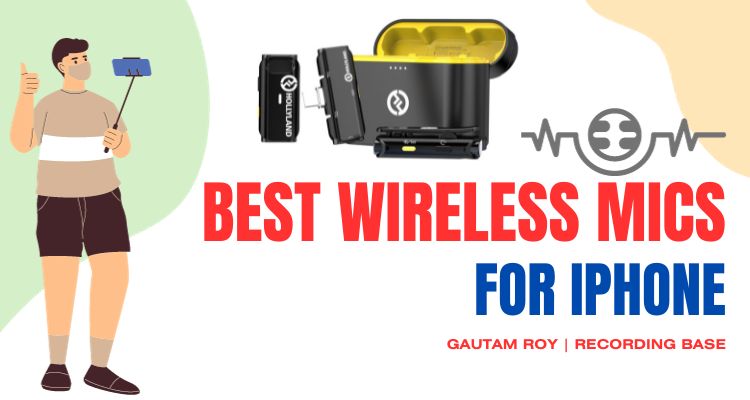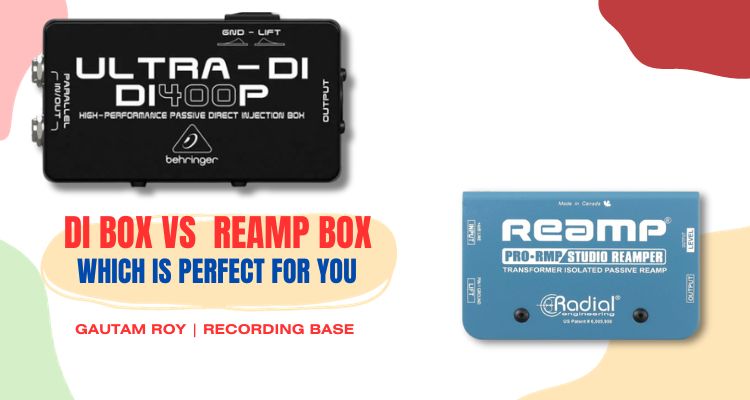In this guide, I will l introduce you to the 3 common types of headphones. You will also learn which type of studio headphones you should go with?
When it comes to studio equipment, the market is stuffed with full of confusion. Obviously, you get confused in deciding which one is best for your needs.
However, in all studio equipment choosing the right studio headphones is the toughest job.
Do you know why?
Because they are of many types. Without prior knowledge of headphones, you can’t decide that which one you should buy.
Before hitting the buy button on your shopping cart you should know which type of headphones is used for which purpose as well as their pros and cons.
Well, don’t worry. Today I’m here with that prior knowledge that will help you to choose your right studio headphone.
Headphones Buying Guide: Which Studio Headphone is Better [The Debate Continues]
In general, we can divide studio headphones into 3 categories.
Disclosure: This post may contain affiliate links, which means we may receive a commission if you click a link and purchase something that we recommended. Read more about Affiliate disclosure here.
- Open back studio headphones
- Closed back studio headphones
- Semi-open back studio headphones
They all have their own applications and we as professional recording engineers use them for specific operations but the debate is going on among our fellow newbies as well as some experienced ones – which one is better?
Here in this article, I will discuss all the applications for which they are used as well as the pros and cons of using them in the wrong applications.
This article will help you with choosing the right studio headphones so that after hitting the buy button on your shopping cart you don’t repent over a wrong decision.
Well, let’s jump into the business.
Open Back Studio Headphones
Open-back headphones are widely used for mixing and mastering as well as DJ applications. They have a fully open backside protected by a steel net.
The principle below a fully open back is to release the sound pressure built inside the enclosure.
If this pressure cannot be released in some way, then they mix up with original sound waves and cause un-proper monitoring.
This is the main reason behind using it widely in mixing and mastering. In audio mixing, it’s a common problem to get distracted by unwanted reflected sound waves.
Whether it’s a studio monitor within a poorly acoustic-treated control room or a closed-back headphone. Reflections are all over there.
Especially low-frequency sound waves whose damping rate is much lower than higher ones.
Open-back headphones are not only used in mixing but also in DJ and live applications.
In live performances, we have to wear headphones for a long time during the performance.
As closed backs create reflections so in a long time use wearing closed-back causes fatigue. That is the reason why performers choose open back over closed.
Pros of Open back headphones
- Provides accurate sound for mixing and mastering applications (Open back minimizes the inside wall reflection).
- Because of the minimum reflection, open back headphone doesn’t create extra pressure on our ear so we can use them for a long time as compared to closed back headphones.
Cons of Open back headphones
- Open back headphones are fully open on the backside so they produce more outside noise. We can’t use them in the acoustic instrument and vocal recording.
The Open Back headphone which I have is –Sennheiser HD 650 Checkout this headphone
Closed Back Studio Headphones
Closed-back headphones are generally used in vocal and acoustic instrument recording. It is used as a monitoring device for vocalists and musicians.
The one and the only reason behind using closed-back headphones as vocal monitoring is, it’s built. Closed-back headphones have no open outlets to release the sound from the backside.
So the sound generated inside the enclosure doesn’t affect the outer environment.
In vocal and other acoustic recordings, we use condenser microphones.
Condenser microphones are as sensitive as they are able to catch each and every detail of the room sound. This is the reason why you should treat your vocal room with good soundproof materials.
Now come to the topic.
Closed headphones have don’t have an outlet to channelize the sound outside, so they are ideal headphone types for vocal and acoustic monitoring by the vocalist and instrument player.
If we use open or semi-open headphones in the vocal room, the headphone sound will also record along with the vocal. As a result, when we mix the vocal track we can’t get rid of that background noise.
I have also suffered from this annoying situation in my career’s first stage. Even using Gate in the vocal track I couldn’t able to get rid of that annoying background noise. At last, I had to re-vocal my projects.
However, as every good thing comes with some bad, there are some cons of open-back headphones. Feeling fatigued after long use, unbalanced sound, and some other thing you will face with a closed-back headphone.
Pros of Closed-back headphones
- Widely used for Vocal and Acoustic monitoring as well as for general applications.
- Due to the closed enclosure, doesn’t affect the outer environment. That means more soundproof then open and semi-open headphones.
Cons of Closed-back headphones
- The closed enclosure causes the reflection inside the headphone. As a result, you get a mixed sound which is not recommended for sound mixing.
- As the damping of low frequencies is lower than higher ones. So you listen artificial bass.
- Due to the increased bass and closed enclosure you feel fatigue after long use. It’s not an ideal headphone type for long time use like mixing projects.
- Long time and increased sound use of these type of headphones could cause permanent hearing loss. I recommend using these headphones for a short period of time and with low volume. After a certain amount of time, release your ears for some time to relax.
My favorite closed-back headphone is Audio-Technica ATH-M50x Check out this headphone
Also, Check out the Audio Technica ATH-M50xRT Review – Best multipurpose wireless headphone
Semi-open Studio Headphones
These are my favorite type of headphones. However, I don’t recommend Semi-open headphones for mixing purposes but if you can’t afford separate headphones for vocal monitoring and mixing, you should definitely go with Semi-open headphones.
Semi-open headphones have tiny holes on the backside of the enclosure. These holes are not as wide as open-back ones. So these headphones can’t minimize the inside reflection as much as open-back headphones.
But they are not as unreliable as closed-back headphones. You can use also Semi-open headphones for mixing purposes.
On the other hand, as the holes are not as wide as open back the outside noise is lower than open-back headphones. You can use Semi-opens in vocal sessions too if you have a condenser mic that is not too sensitive.
This dual nature of Semi-open headphones makes it my favorite headphone type. For home studio owners who can’t afford separate headphones, this is the ideal type which I would suggest.
Pros of Semi-Open headphones
- The dual nature makes it ideal for monitoring as well as mixing.
- Tiny holes behind the driver to release the inner pressure, hence ideal for long time use without fatigue and hearing problem.
- Artificial bass frequencies are lower than closed-back headphone types which makes it better headphone type for mixing and mastering purposes.
- Does not produce as much noise as open-back headphones, so you can consider them to use in vocal session with a bit less sensitive condenser mics.
Cons of Semi-Open headphones
- Not as much accurate as open back headphones. The frequency curve is little affected by the inside reflections. If you afford separate headphones for monitoring and mixing then you should always go with open-back headphones for mixing purpose.
One of the best semi-open headphones is AKG K240Studio Checkout this headphone
Well, I have provided my aspect of these 3 types of headphones. I think many of you are already using one or more types. If you have some extra information that you feel could help others to decide the headphone type they should go with, write below in the comment.
If you have any questions regarding studio headphones, you can also comment below. Our RB community will answer your questions.
You may also like,

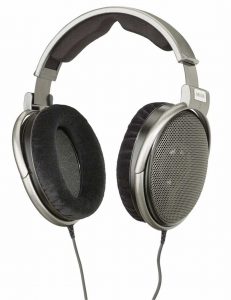
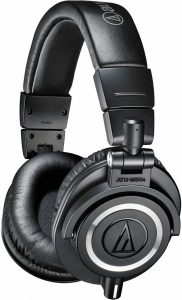
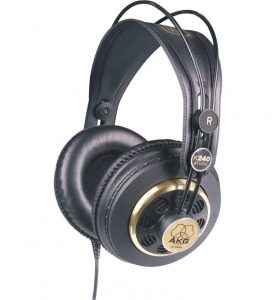
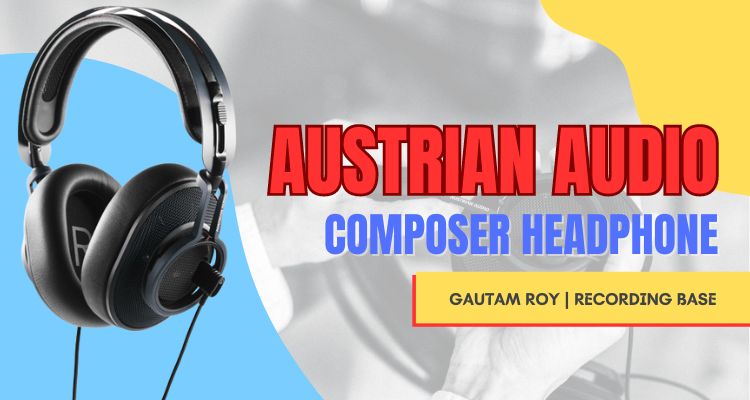
![Heritage Audio i73 PRO Series Audio Interfaces Review [2024]](https://www.recordingbase.com/wp-content/uploads/2024/01/Heritage-Audio-i73-pro-series.jpg)
